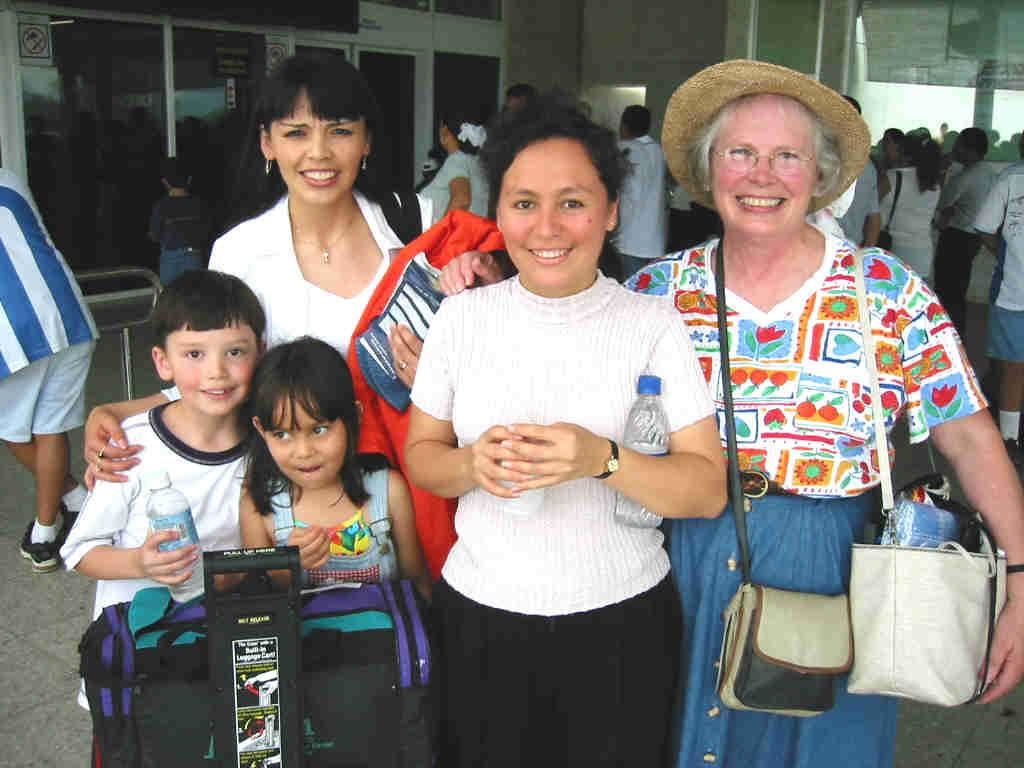-
Journal Entry #9
Three Sticks, String, and a Rock!
By Elsa Schwarzmueller
1. What is soil?
Soil is a layer of mineral matter, organic matter, water, and air that
supports the growth of plants._
_
_
-
_
_
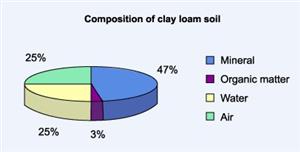
Soil is a resource.
We depend on soil for agriculture.
We depend on agriculture for food.
Food is a basic necessity.
We depend on soil to survive.
What type of resource is soil?
(renewable, nonrenewable)
It depends on how you treat the soil.
If you conserve soil and let the nutrients replenish, the soil will be a renewable resource.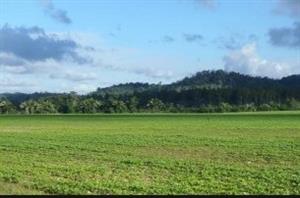
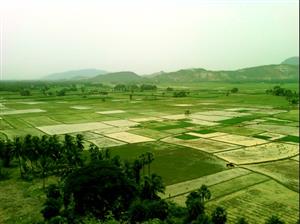
If you don't conserve soil, then the soil will be a nonrenewable resource.
It takes hundreds of years for a single centimeter of soil to form and
thousands of years for good fertile soil to form.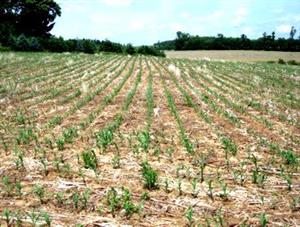
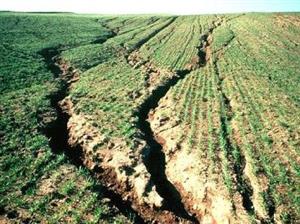
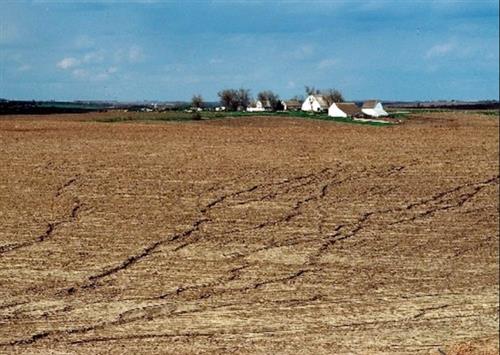
What human activities cause soil erosion?
Agriculture, deforestation, roads, urbanization, and climate change.
Which causes the most soil erosion? Why?
Agriculture
Tilling, or plowing, removes the plants that hold the soil in place.
The soil is easily washed or blown away without plants to hold it there.
Other reasons include growing only one crop and using pesticides, chemical fertilizers, row cropping, and surface irrigation.
Farming on slopes increases the rate of soil erosion.
Many places in the world practice "Slash and Burn" farming.
This is where farmers go into the forests, slash the trees, and burn them down to clear the tropical forests.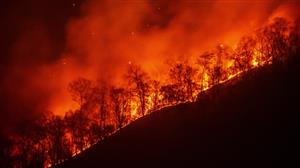
Farmers will then be able to plant crops (often corn) for a few years before all the good organic topsoil is washed away and nothing will grow.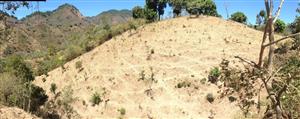
Then they will need to find more forest to slash and burn.
This produces a cycle of death and destruction.
To prevent this, people have been using a very effective method for conserving soil known as Contour or Terrace Farming.
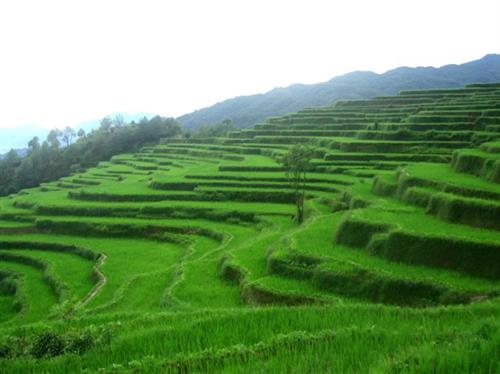
This is a very effective method of conserving soil, and humans worldwide have been using it for thousands of years.
What is down?
Down is a place. For us on Earth, down is the very center of Earth.
When you drop something, it falls down
When you throw something, it comes down
And when you tie something heavy to a piece of string,
A heavy object hangs straight
down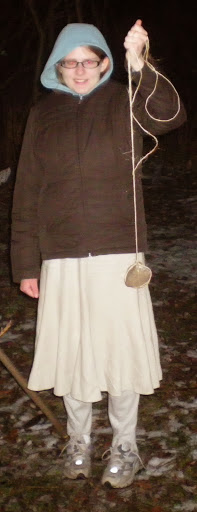
The object will always hang straight down.
What is a contour line?
A contour line is a line that connects points of equal elevation.
Because the points are of equal elevation, contour lines are flat (level).If you want to conserve soil and water with lines of rubbish, stone lines, grass strips, trenches, and terraces, finding a contour line is important.
It doesn't matter what the contour line's elevation is; it must be level.
To find a contour line, you have to find points of equal elevation and level with each other. This can be done with three sticks, a string, and a rock.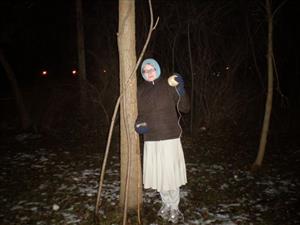
Three sticks, string, and rock can make a tool called
'A' Frame Level
You must first make the level mark to find points that are level with each other.
The level mark shows you if the A-Frame is crooked or not.
When the A-Frame is crooked, the string is off to one side.

To calibrate your A-frame level (finding level).
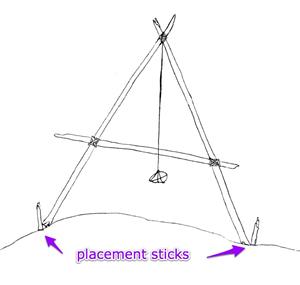
Place your A-Frame level on the un-level ground and mark the A-Frame with 2 placement sticks.
Also, mark where the string touches the middle stick.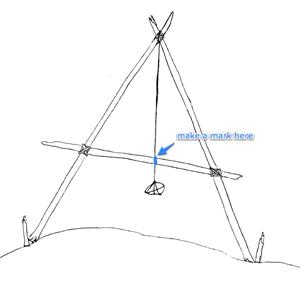
Flip the A-Frame Level around and place the sticks in the same spots.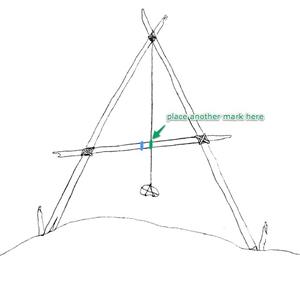
Again, mark where the string touches the middle stick.
The exact middle of the two marks is the level mark.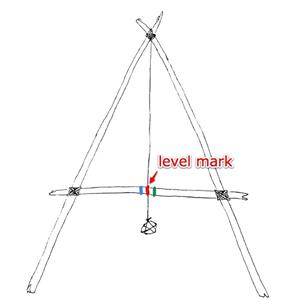
When the A-Frame is level, the string lines up with this mark, and the base of the two sticks of the A-Frame are at the same height above sea level.
You have found two places that are level or on contour!
When you find a contour line, you find points
that are level with each other.
The string must be on the level mark for all points on a contour line.
To find a contour line, place a stick in the ground where you want to start.
Place one leg of the A-Frame, so it touches the stick.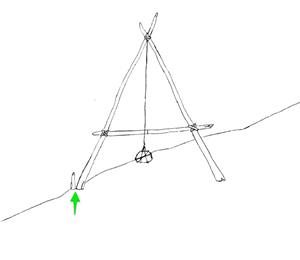
Pivot the A-Frame Level until the string touches the level mark.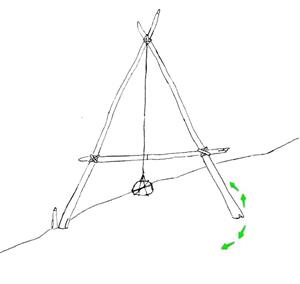
Place another stick in the ground where the leg of the A-Frame is.
Move the A-Frame over.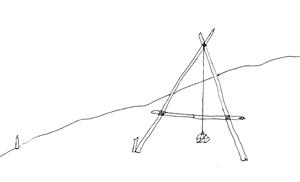
Pivot the A-Frame Level again to find the next point.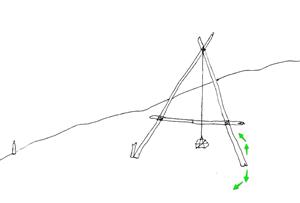
Repeat this until you are done making your contour line.
Once you have your level marks on the ground, you can build ditches, terraces, plant borders, or do many other things to control the flow of water and soil erosion!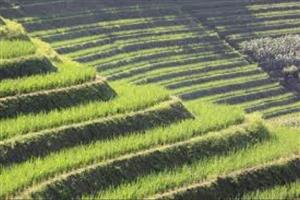
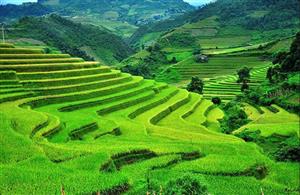
An A-Frame Level can save soil, which helps save lives by providing rich land to grow healthy food and help establish a prosperous society.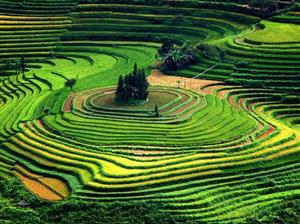
With three sticks, a string, and a rock, you can help alter a cycle of hunger, death, and destruction and improve many people's lives.
Constructing an A-Frame Level

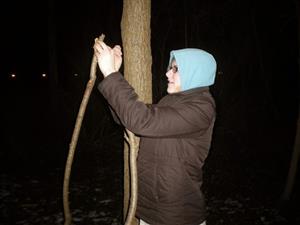
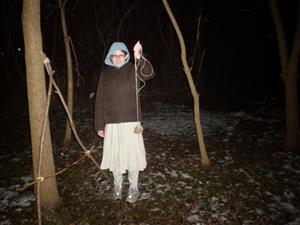
Thank you!
By Elsa Schwarzmueller
Direct link: https://www.youtube.com/watch?v=hKj6VSZLJy8&feature=emb_logo
Maybe this link will work: https://www.youtube.com/embed/hKj6VSZLJy8
Reflection
What did you learn, or what was reinforced by this lesson?
Please be specific.
How can you use an A-frame level to help control soil erosion?
Why is controlling soil erosion important?
Some photos of my work in the Peace Corps many years ago.
Mr. Robison
It was much worse than it looks here.
Fighting forest fires is a tricky business.Often you have to fight fire with fire.
You start by getting in front of the fire 100 yards or so, then clearing a path down the hillside.
You light the fire towards the oncoming wildfire.You do this hoping the wildfire's embers will not be able to "jump" over the burnt area where you backfired.
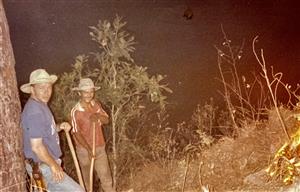
A few college friends came to visit. I don't think they understood what they were in for!
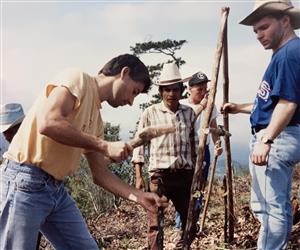
Here they are learning how to use the A-Frame Level.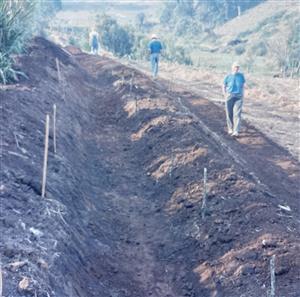
It takes a lot of work to terrace the hillside!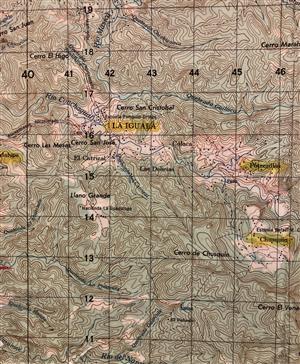
This is the topographic map that I would use to find my way around.
Here is where I used to work.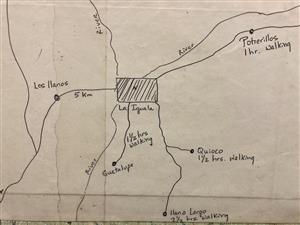
Every day I would walk to one of these villages to work.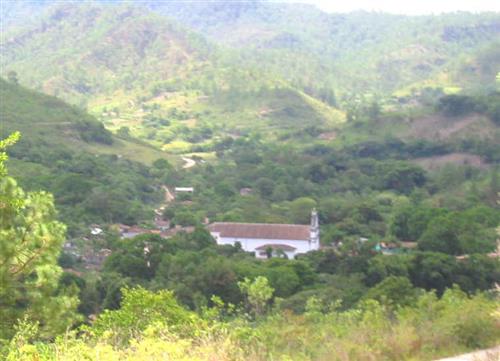
This was the town I called home for three years.The people were amazing!
Yet many of their lives were very difficult!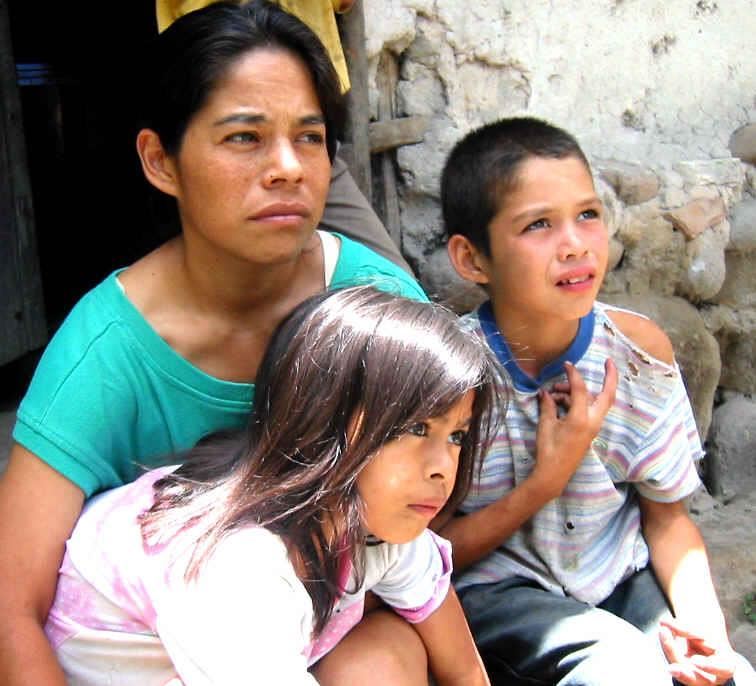
I was lucky enough to meet a lot of wonderful people!
